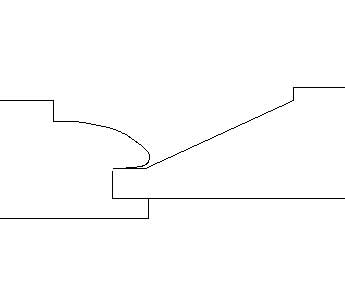Troubleshooting Grain Raise with Waterborne Finishes
Waterborne finishes raise the grain of wood, requiring extra sanding. Here's advice on how to minimize the extra labor. July 15, 2014
Question (WOODWEB Member) :
When working with waterborne dealing with the raised grain is a real problem. I've tried sealcoat and that's ok. I still need at least two coats (sand between) to eliminate raised grain. It seems like a lot of work and product just to get to the point of actually finishing. When I hit it with waterborne I’m still getting some fuzzies. Are there any one-coat solutions?
Forum Responses
(Finishing Forum)
From contributor A:
1. Mist spray the uncoated wood surface with water.
2. Allow the surface to dry.
3. Sand as per normal.
Grain raising should not occur doing this.
From contributor B:
You must be new to WB's. WB and grain raise go hand in hand, especially when using WB dye's and stains but really it isn't that big a problem . Sure it's a little rough but 400/320 and synthetic steel wool and you're good to go.
From the original questioner:
I've been working with Target coatings (9000) and didn't do any grain raising prior to coating. I just figured that a first coat would handle that and I could move on. The trouble is after like three wet coats I'm still getting some roughness. The sanding is getting old.
From Contributor J:
My guess is that after three coats it's not grain raise but microbubbles or dry spray. Take a close look at it.
From contributor A:
It’s not likely to be microbubbles since fuzz is present. Sanding is part of the problem. It breaks the fuzz leaving a clear path for the next coat to get down to the substrate. Try two or three coats without sanding. This will seal in the grain raise.
From contributor B:
“I've been working with Target coatings (9000) and didn't do any grain raising prior to coating.”
I used Target for two years here on the west coast until shipping was a problem and they along with every other/my current WB coating raises the grain.
From contributor F:
I found out through a lot of trial and error that regardless of the brand, WB finishes seem to prefer to be applied in lighter coats. The lighter the coats the fewer problems I seem to have overall with issues common to WB finishes including grain raise, dry times etc. When I learned to lighten up, the need for pre wetting/grain raising or dewaxed shellac were minimized to the point where now I don't even bother with them unless I want the shellac to help the overall appearance of the finish.
From Contributor W:
I've used brush sanders to great effect actually sanding the stain coat after it popped really badly. A light dust off of the raised grain in the stain is often just want the doctor ordered.
